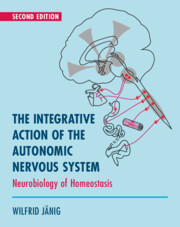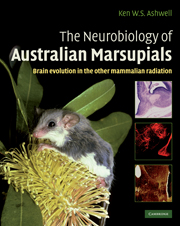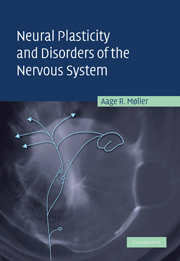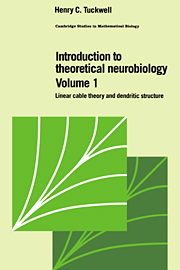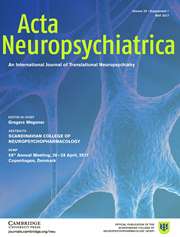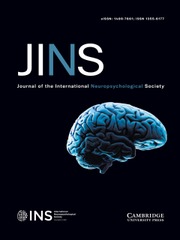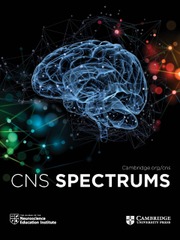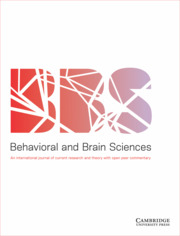The Integrative Action of the Autonomic Nervous System
Neurobiology of Homeostasis
2nd Edition
$195.00 (C)
- Author: Wilfrid Jänig, Christian-Albrechts Universität zu Kiel, Germany
- Date Published: November 2022
- availability: In stock
- format: Hardback
- isbn: 9781108478632
$
195.00
(C)
Hardback
Other available formats:
Paperback, eBook
Looking for an examination copy?
This title is not currently available for examination. However, if you are interested in the title for your course we can consider offering an examination copy. To register your interest please contact [email protected] providing details of the course you are teaching.
-
Almost all bodily functions are dependent on activity of the autonomic nervous system – from the cardiovascular system, the gastrointestinal tract, the evacuative and sexual organs, to the regulation of temperature, metabolism and tissue defence. Balanced functioning of each aspect of this system is an important basis of our life and well-being. In this long-awaited second edition, the author, a leading figure in this field, provides an up-to-date and detailed description of the cellular and integrative organization of the autonomic nervous system, covering both peripheral and central aspects. The book exposes modern neurobiological concepts that allow us to understand why this system normally runs so smoothly and why its deterioration has such disastrous consequences. This broad overview will appeal to researchers and advanced undergraduate students of the various biological and medical sciences studying how the autonomic nervous system works and to clinicians and physical therapists whose practice involves systems dependent on autonomic functions.
Read more- Fully revised and updated throughout, with new overview boxes and new subchapters
- Figures, now in colour and many of them redesigned, are focussed to represent concepts and ideas, making them a very valuable resource for teaching graduate and undergraduate students
- Includes a new epilogue focussing on exciting directions for future research
Reviews & endorsements
‘This is the ultimate resource for anyone interested in autonomic neurosciences. Professor Jänig has tastefully updated a classic book which manages to distill a vast body of knowledge that will continue to be cherished by students as well as established scientists.’ Kalyanam Shivkumar, Professor of Medicine, The University of California, Los Angeles (UCLA), and President, International Society for Autonomic Neuroscience (ISAN 2022)
See more reviews‘Wilfrid Jänig has produced an outstanding synthesis of the state of knowledge of the autonomic nervous system (ANS). The book is far more than a summary of knowledge; Jänig has drawn out important principles from experimental work and his deep understanding of physiology. He shows how the ANS, in partnership with endocrine hormones, purposefully maintains cells, tissues, and organs in their optimal functional states. The book is beautifully illustrated, especially with diagrams of autonomic circuits. Also very helpful are the conclusions paragraphs at the ends of chapters. The book is essential reading for the seriously engaged physiologist and physician.’ John B. Furness, Professor of Anatomy and Physiology, The University of Melbourne and The Florey Institute of Neuroscience and Mental Health
‘This is the ‘Workshop Manual’ of how the autonomic nervous system works. The integrative aspect of this book is quite superb. Jänig has avoided the traditional, and unhelpful, silo approach where bodily systems are separated in distinct chapters. This is inconsistent with how the body works. This new edition leaves no ‘autonomic’ stone unturned, covering endplates to emotion, credits the historical facts that have stood the test of time but kicks those into touch that have not. So pleasing was to see that the book challenges old/outdated dogma and sets the facts straight by reviewing the most current evidence. I know that my copy of this book will spend its life being read and not on a shelf; it will be poured over by professors and students alike. The illustrations require a mention: they are exceptional - clear, concise, and comprehensive. I believe this book will put the autonomic nervous system front and center in the field of neuroscience.’ Julian F.R. Paton, Professor of Translational Physiology, University of Auckland, New Zealand
Customer reviews
Not yet reviewed
Be the first to review
Review was not posted due to profanity
×Product details
- Edition: 2nd Edition
- Date Published: November 2022
- format: Hardback
- isbn: 9781108478632
- length: 432 pages
- dimensions: 260 x 207 x 25 mm
- weight: 1.17kg
- availability: In stock
Table of Contents
Foreword to the Second Edition Elspeth McLachlan
Foreword to the First Edition Elspeth McLachlan
Preface
List of abbreviations
Introduction: The autonomic nervous system and the regulation of body functions
Part I. The Autonomic Nervous System: Functional Anatomy and Interoceptive Afferents:
1. Functional anatomy of the peripheral sympathetic and parasympathetic nervous system
2. Interoceptive afferent neurons and autonomic regulation with special emphasis on the viscera
Part II. Functional Organization of the Peripheral Autonomic Nervous System:
3. The final autonomic pathway and its analysis
4. The peripheral sympathetic and parasympathetic pathways
5. The enteric nervous system
Part III. Transmission of Signals in the Peripheral Autonomic Nervous System:
6. Impulse transmission through autonomic ganglia
7. Mechanisms of neuroeffector transmission
Part IV. Representation of the Autonomic Nervous System in Spinal Cord, and Lower Brain Stem:
8. Anatomy of central autonomic systems
9. Spinal autonomic systems
10. Regulation of organ systems by the lower brain stem
Part V. The Centers of Homeostasis in the Mesencephalon and Hypothalamus and their Telencephalic Control:
11. Integration of autonomic regulation in upper brain stem and limbic-hypothalamic centers: a summary
Epilogue The autonomic system in future research: some personal views
Index.-
General Resources
Find resources associated with this title
Type Name Unlocked * Format Size Showing of
This title is supported by one or more locked resources. Access to locked resources is granted exclusively by Cambridge University Press to instructors whose faculty status has been verified. To gain access to locked resources, instructors should sign in to or register for a Cambridge user account.
Please use locked resources responsibly and exercise your professional discretion when choosing how you share these materials with your students. Other instructors may wish to use locked resources for assessment purposes and their usefulness is undermined when the source files (for example, solution manuals or test banks) are shared online or via social networks.
Supplementary resources are subject to copyright. Instructors are permitted to view, print or download these resources for use in their teaching, but may not change them or use them for commercial gain.
If you are having problems accessing these resources please contact [email protected].
Sorry, this resource is locked
Please register or sign in to request access. If you are having problems accessing these resources please email [email protected]
Register Sign in» Proceed
You are now leaving the Cambridge University Press website. Your eBook purchase and download will be completed by our partner www.ebooks.com. Please see the permission section of the www.ebooks.com catalogue page for details of the print & copy limits on our eBooks.
Continue ×Are you sure you want to delete your account?
This cannot be undone.
Thank you for your feedback which will help us improve our service.
If you requested a response, we will make sure to get back to you shortly.
×
